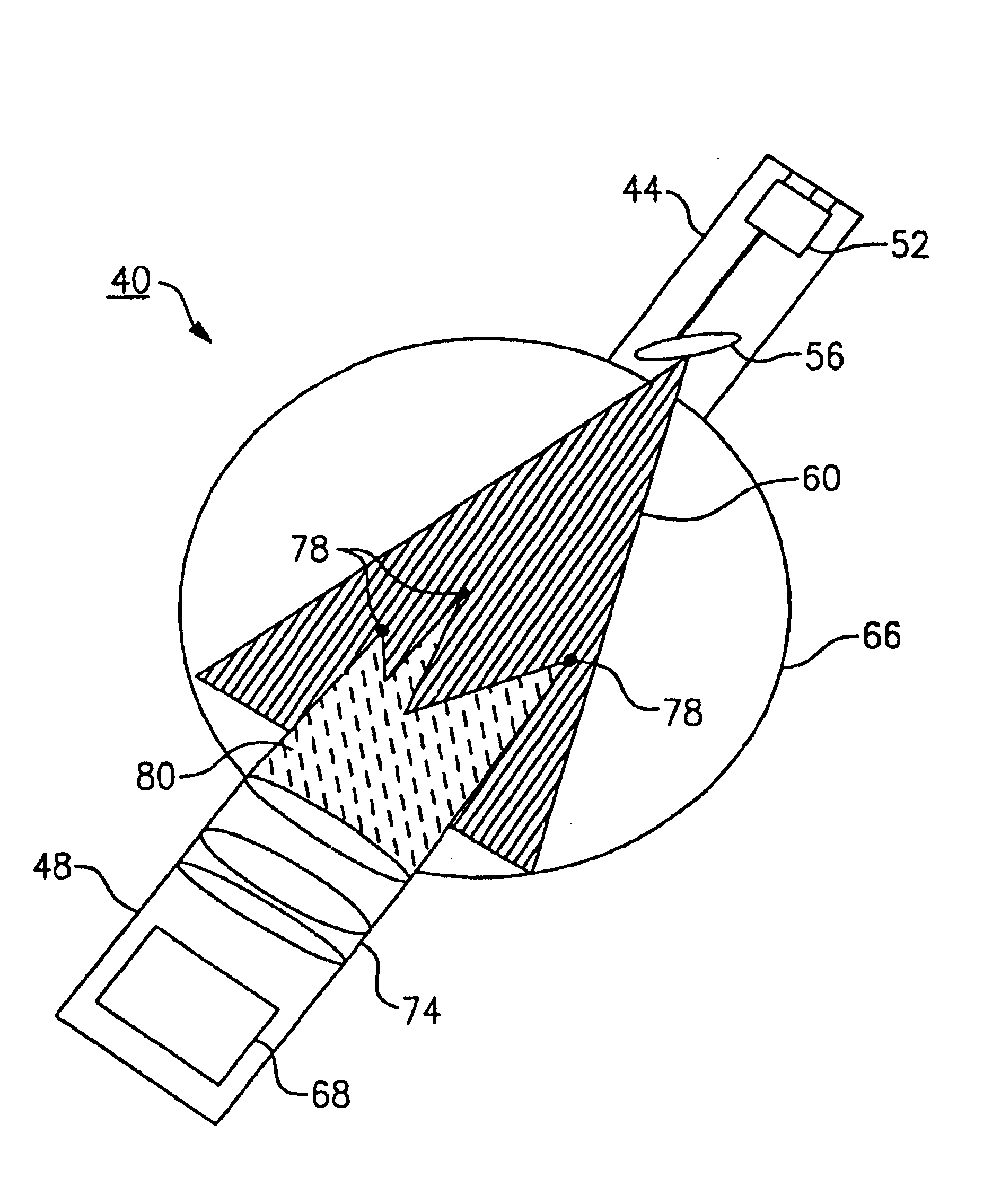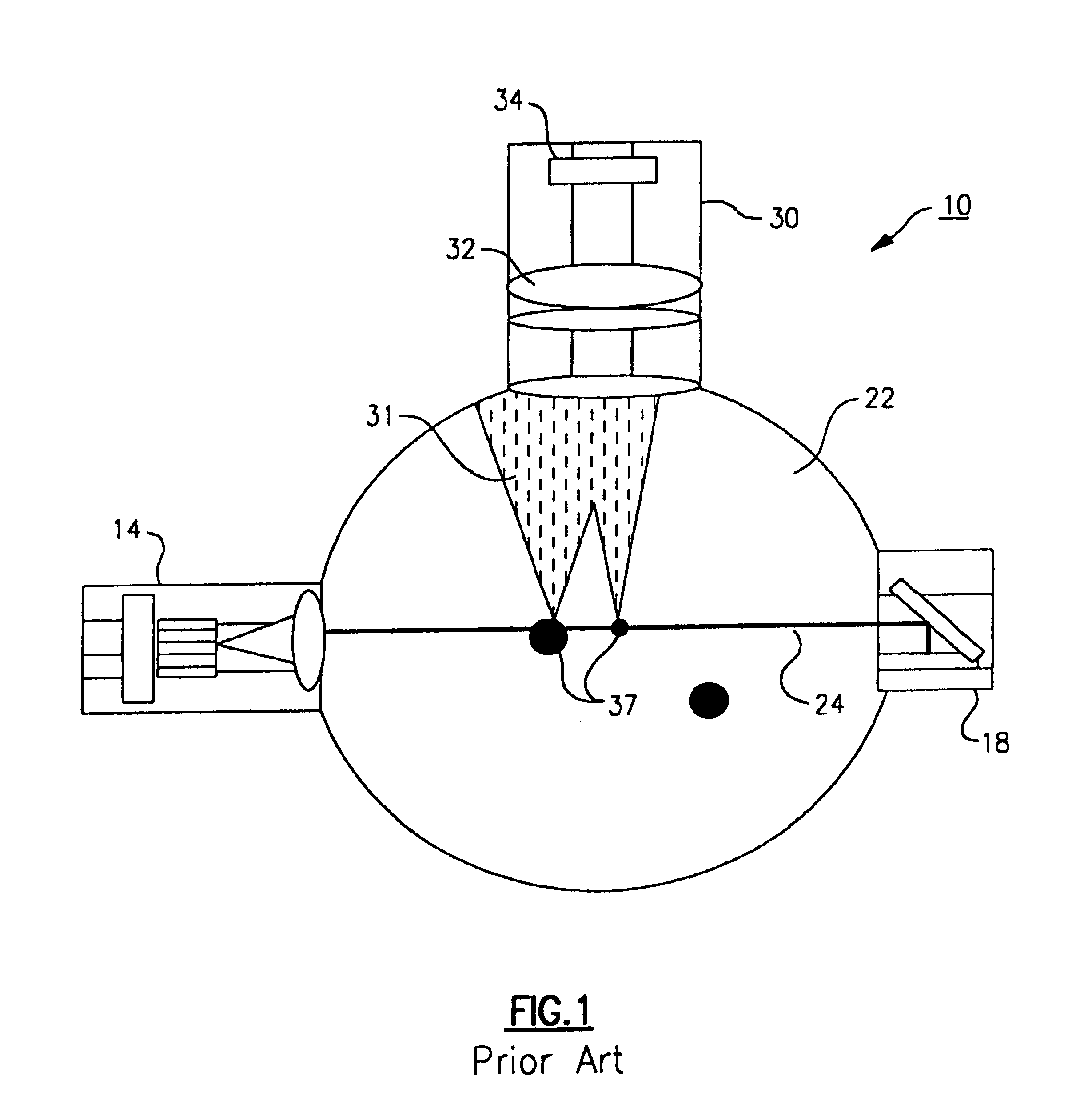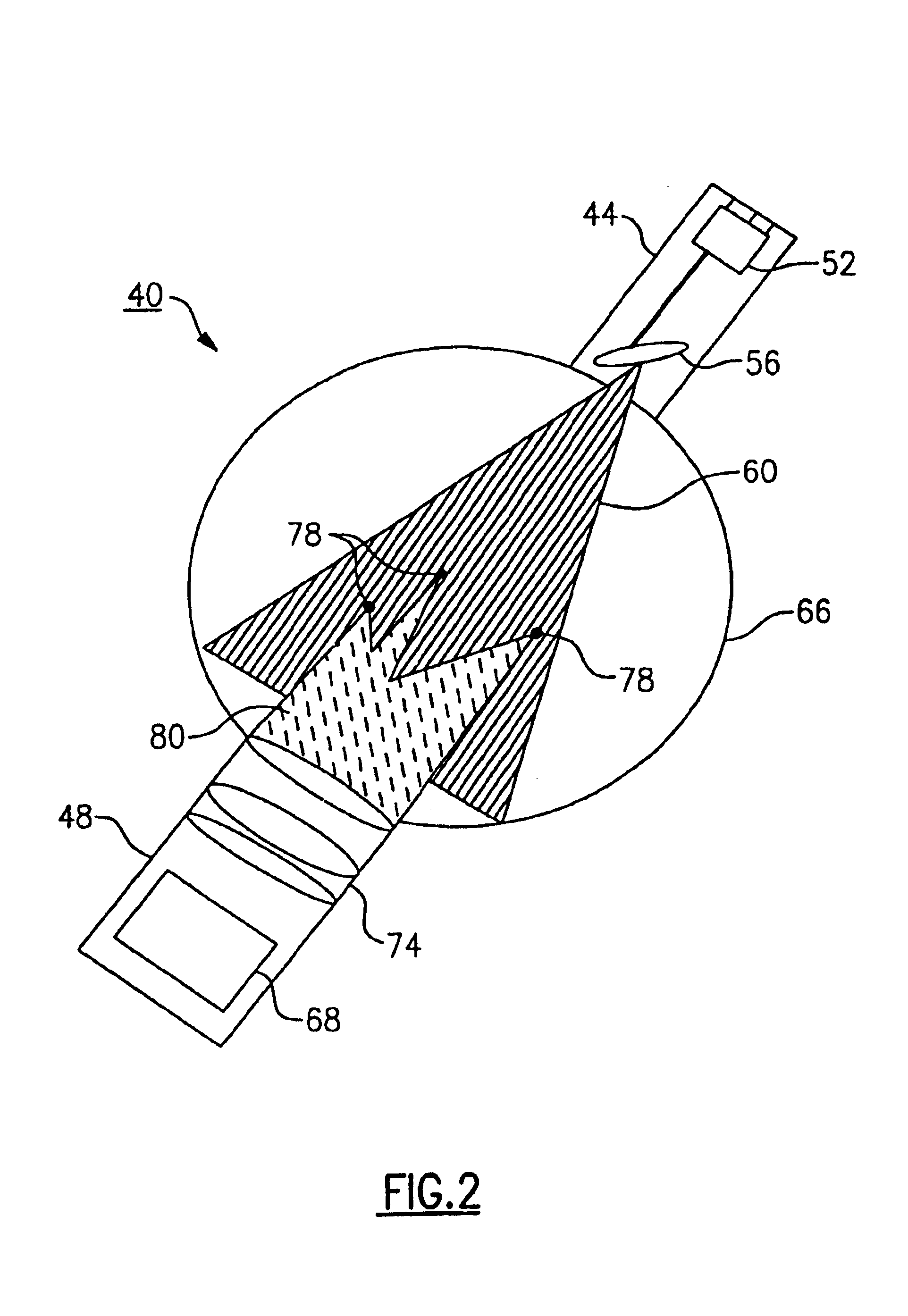Signal processing method for in-situ, scanned-beam particle monitoring
a particle monitor and signal processing technology, applied in the field of semiconductor wafer processing, can solve the problems of particle depositing on a processed wafer that cannot be measured with the sensor in the pump-line configuration, and the ispm sensor application often produces poor correlation with the number of particles, so as to reduce the number of false negatives and better determine the existence of single pulse events
- Summary
- Abstract
- Description
- Claims
- Application Information
AI Technical Summary
Benefits of technology
Problems solved by technology
Method used
Image
Examples
Embodiment Construction
[0033]Referring to FIG. 1, there is shown an ISPM (in situ Particle Measurement) system in accordance with the prior art. The system 10 includes a laser diode 14 which emits a fixed collimated light beam 24 across a measurement volume, such as a pump line 22. A beam dump 18 disposed oppositely from the laser diode 14 is used to collect the resulting light beam 24 in order to minimize background light. Particles 37 crossing the measurement volume cause the light beam 24 to back, forward or side scatter with the resulting light 31 being detected by an orthogonally arranged detector assembly 30 having a photocell 34 which receives focused scattered light through an collection optical system 32. Peak detection is employed on resulting voltage spikes from the scattered fixed beam to count particles over a preset threshold. As note, the light beam of the above ISPM system is fixed; therefore, the light beam can only impinge upon a particle moving through the measurement volume a single ti...
PUM
 Login to View More
Login to View More Abstract
Description
Claims
Application Information
 Login to View More
Login to View More - R&D
- Intellectual Property
- Life Sciences
- Materials
- Tech Scout
- Unparalleled Data Quality
- Higher Quality Content
- 60% Fewer Hallucinations
Browse by: Latest US Patents, China's latest patents, Technical Efficacy Thesaurus, Application Domain, Technology Topic, Popular Technical Reports.
© 2025 PatSnap. All rights reserved.Legal|Privacy policy|Modern Slavery Act Transparency Statement|Sitemap|About US| Contact US: help@patsnap.com



